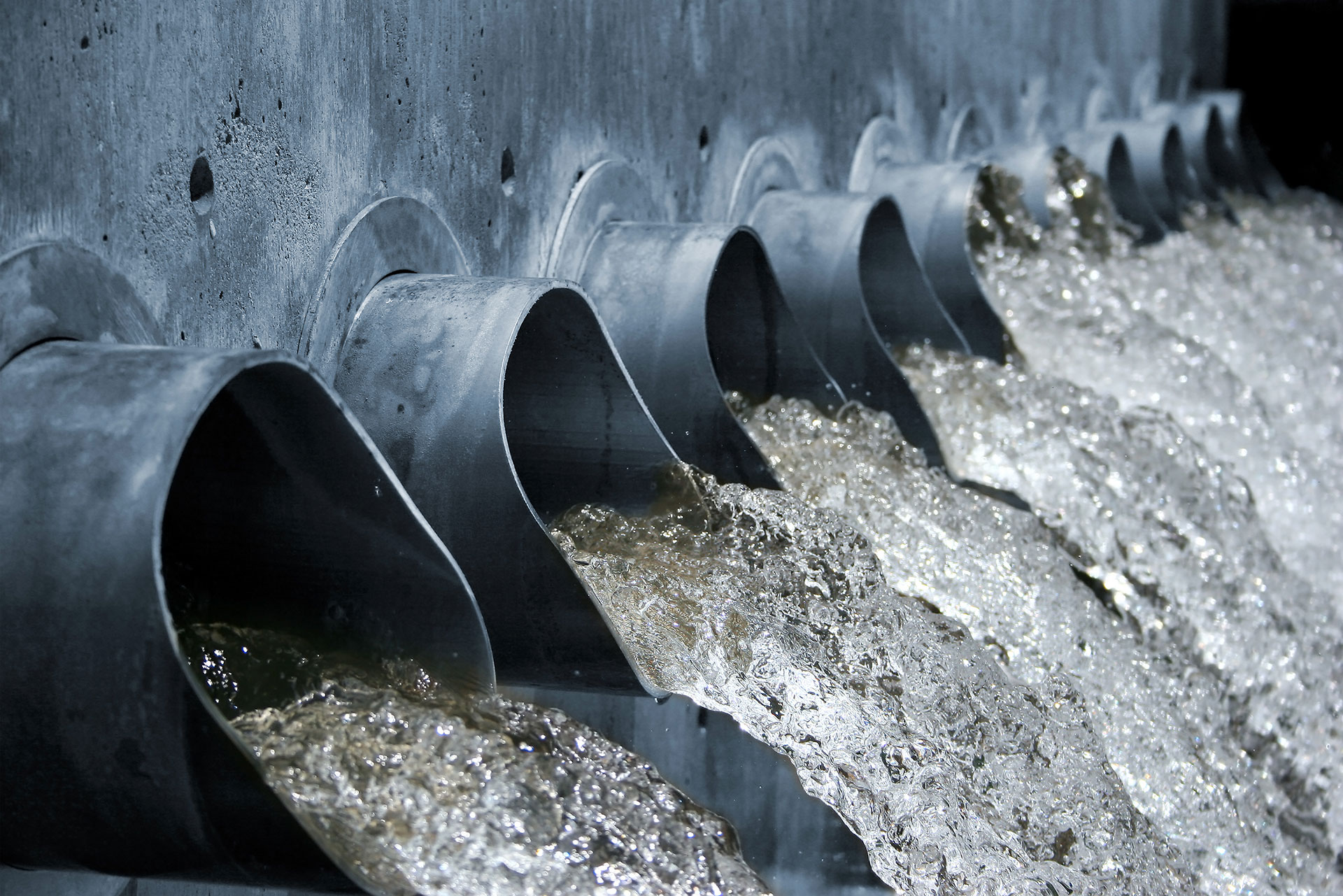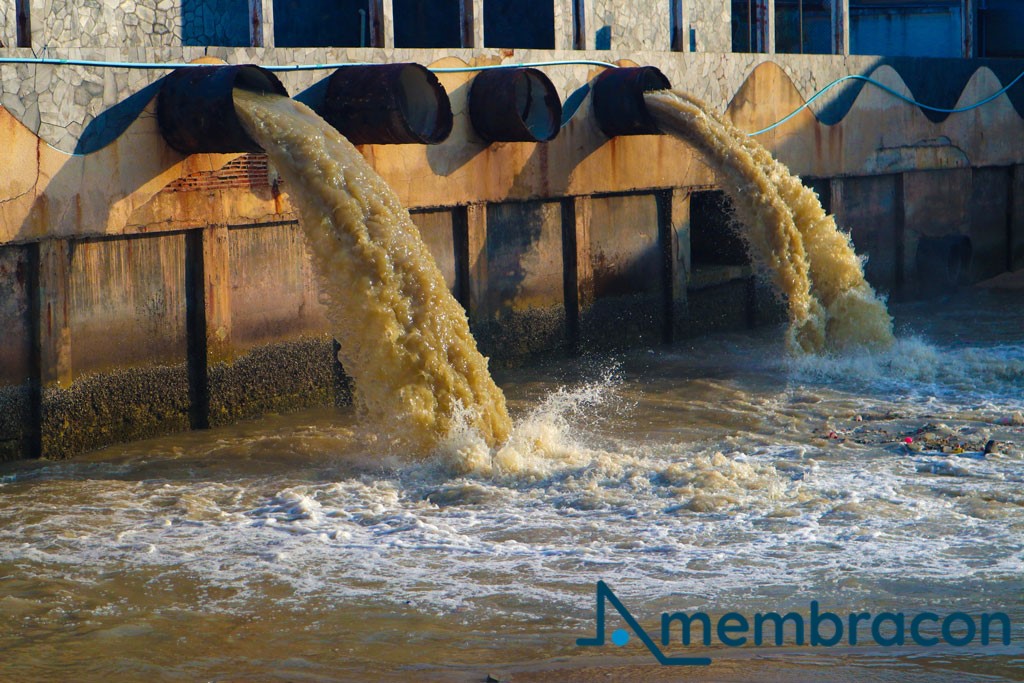Industrial Waste Water Treatment-- Advanced Solutions for Cleanser Effluents
Industrial Waste Water Treatment-- Advanced Solutions for Cleanser Effluents
Blog Article
Trick Methods in Hazardous Waste Water Therapy Processes
The therapy of commercial wastewater is a crucial element of ecological monitoring, entailing an array of strategies designed to mitigate the effect of pollutants. Innovations in modern technologies such as membrane purification and advanced oxidation procedures use cutting-edge options for improving treatment effectiveness.
Physical Treatment Techniques
Exactly how successfully can physical therapy approaches address the complexities of industrial wastewater? Physical therapy techniques play a pivotal function in the preliminary phases of wastewater management, focusing primarily on the elimination of solids and large particulates. Techniques such as filtration, sedimentation, and flotation protection are important for minimizing the focus of suspended solids, consequently boosting the effectiveness of succeeding therapy processes.
Sedimentation entails the gravitational settling of solids, enabling for the separation of much heavier products from the wastewater. This approach is specifically efficient in making clear water prior to chemical or organic therapies.
Additionally, flotation methods, which utilize air bubbles to lift suspended solids to the surface for removal, work in dealing with wastewater with high concentrations of fats, oils, and oils. Generally, physical treatment methods serve as an essential initial step in the detailed administration of industrial wastewater, making certain that the lots on subsequent treatment stages is decreased and boosting total therapy effectiveness.
Chemical Treatment Techniques
While physical treatment approaches lay the groundwork for efficient wastewater management, chemical treatment methods are important for resolving the a lot more intricate pollutants typically discovered in industrial effluents. These methods make use of different chemical agents to speed up, neutralize, or oxidize hazardous materials, making certain a much more extensive elimination of contaminants.
One common approach is coagulation and flocculation, where chemical coagulants such as aluminum sulfate or ferric chloride are contributed to promote the gathering of suspended fragments. This procedure enhances solid-liquid splitting up, reducing turbidity and improving water high quality. Furthermore, neutralization processes are utilized to change the pH of wastewater, utilizing acids or bases to neutralize acidic or alkaline streams, respectively.
Oxidation-reduction responses play an essential function in derogatory organic impurities and virus. Chemical oxidants like chlorine, hydrogen, or ozone peroxide are made use of to damage down intricate natural substances, making them much less hazardous or a lot more biodegradable. Progressed oxidation processes (AOPs) combine multiple oxidation techniques to boost pollutant removal performance.
Organic Treatment Procedures
The effectiveness of wastewater therapy is significantly boosted by organic treatment procedures, which harness the all-natural metabolic tasks of bacteria to disintegrate natural issue and remove toxins. Industrial Waste Water Treatment. These processes largely include anaerobic and cardiovascular digestion, each tailored for certain types of wastewater
Cardio treatment processes use oxygen to sustain microbial growth, advertising the break down of natural pollutants right into co2 and water. Typical methods consist of turned on sludge systems, where oygenation tanks assist in the mixing of wastewater with microbes, and dripping filters, which urge biofilm growth on media surface areas.
Conversely, anaerobic therapy processes take place in the lack of oxygen, utilizing anaerobic microorganisms to decompose raw material, causing biogas production, a renewable energy resource. Anaerobic digesters are frequently utilized in industrial setups for this function, effectively minimizing the volume of sludge while generating useful biogas.
The choice of a biological treatment technique depends upon wastewater qualities, therapy goals, and governing requirements. The integration of biological processes in wastewater treatment not just enhances toxin removal effectiveness however additionally promotes sustainability by minimizing chemical usage and sustaining resource recovery.
Advanced Oxidation Processes

Usual AOP methods consist of Fenton's reagent, ozonation, and photocatalysis. Fenton's reagent, a combination of hydrogen peroxide and ferrous iron, militarizes the formation of hydroxyl radicals, making it effective for dealing with wastewater containing phenolic compounds and various other recalcitrant substances.
AOPs use several advantages, consisting of minimized sludge manufacturing and the ability to treat wastewater with high focus of organic contaminants. article The execution of AOPs needs careful consideration of functional criteria and cost-effectiveness, making sure that these innovative methods are suitably incorporated into existing wastewater therapy systems.
Membrane Layer Filtering Technologies

Microfiltration works for removing suspended solids and germs, while ultrafiltration targets smaller natural molecules and infections. Nanofiltration connects the space in between ultrafiltration and turn around osmosis, successfully getting rid of directory organic compounds and divalent ions. Reverse osmosis supplies the highest degree of filtration, used mainly for desalination and removing mono-valent ions.
Membrane innovations use numerous benefits, consisting of reduced power intake contrasted to standard treatment approaches, modular style for scalability, and the capacity for water healing and reuse. Nonetheless, difficulties such as membrane fouling and the need for normal maintenance must be resolved to make sure system efficiency. In general, membrane layer filtration modern technologies represent an important part of modern industrial wastewater therapy methods, advertising sustainability and source preservation in water management.
Final Thought
In final thought, commercial wastewater treatment utilizes a varied range of techniques, including physical, chemical, biological, and advanced approaches. Proceeded innovations in these methodologies will better enhance the see here now effectiveness and efficiency of wastewater therapy processes in industrial setups.
The therapy of commercial wastewater is an important facet of environmental monitoring, including an array of methods made to alleviate the impact of pollutants.Exactly how effectively can physical treatment techniques address the intricacies of commercial wastewater?Advanced oxidation processes (AOPs) represent an innovative strategy in commercial wastewater treatment, created to properly degrade natural contaminants that are often resistant to conventional therapy techniques (Industrial Waste Water Treatment).In final thought, industrial wastewater therapy employs a varied array of strategies, consisting of physical, chemical, biological, and advanced techniques. Proceeded improvements in these methods will even more boost the performance and effectiveness of wastewater treatment processes in commercial setups
Report this page